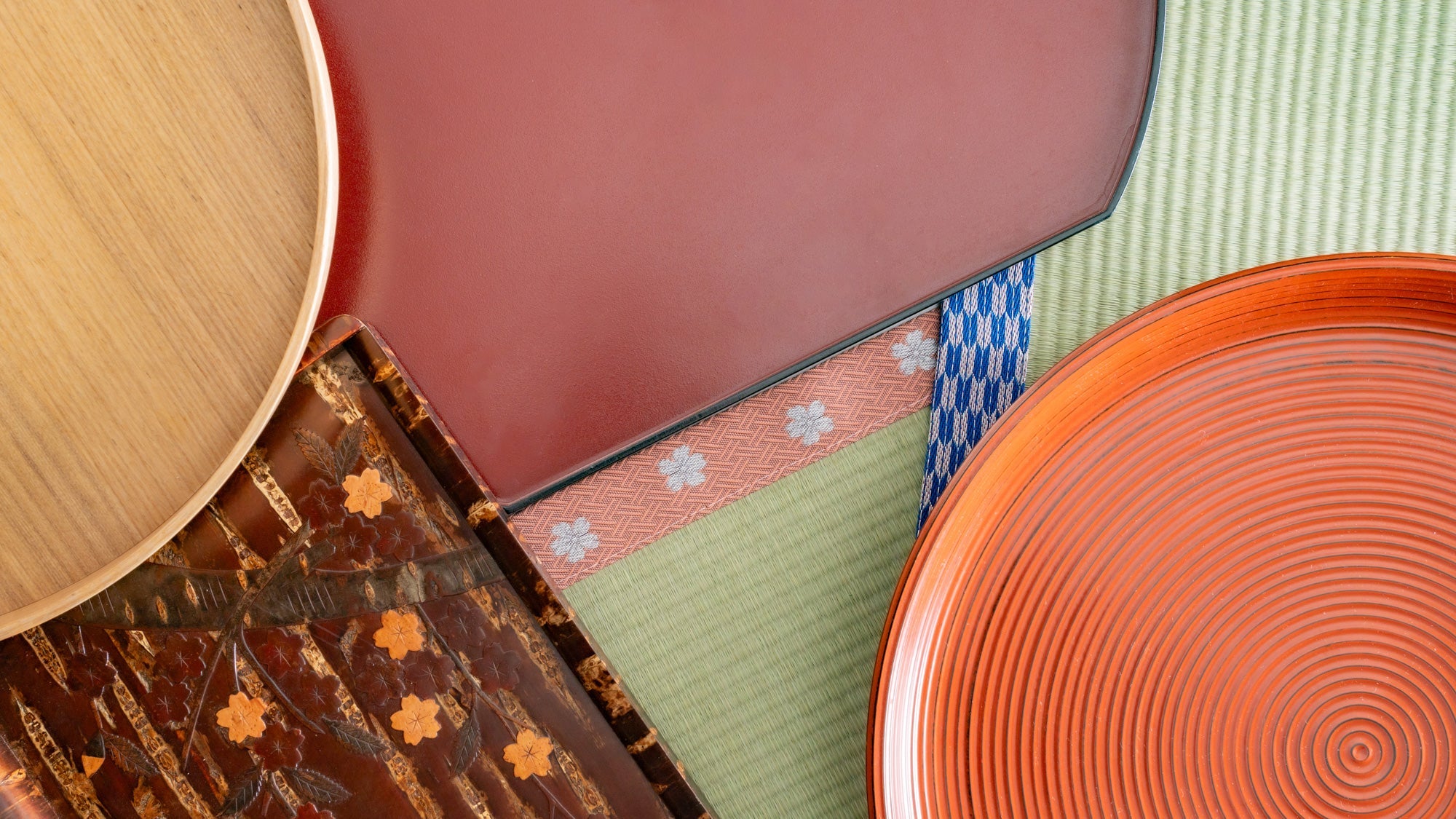
Guide to Japanese Trays & Placemats
Written by Team MUSUBI
In Japanese-style dining, where a variety of small plates and bowls are often used, trays and placemats are essential for both convenience and creating beautiful table settings.
For example, serving a meal for one person on a single tray keeps all the tableware items organized and reduces the need for multiple trips between the kitchen and table. Placemats also make it easy to arrange dishes in the traditional Japanese style, helping you naturally learn the proper placement of each piece.
Moreover, they are useful for making Japanese-style tablescapes, which give traditional, neat, elegant impressions. On this page, learn about the different types of trays and placemats and how to use them to make your table look exceptional.
In this blog, discover the different types of trays and placemats and how their detailed craftsmanship, stunning designs, and authentic ambiance can elevate your dining experience and display.
table of contents
About Japanese Trays and Placemats
What Is An Obon Japanese Tray?

The Japanese tray, known as an obon, is traditionally used to carry tableware and food. Its raised rim keeps items stable on the tray, preventing them from slipping off.
Obon trays come in various shapes—rectangular, square, circular, and half-moon—and are made from different materials. Some feature seasonal designs, adding a touch of elegance to the dining table.
While a single tray is convenient for serving food, having a full set to double as placemats ensures a cohesive and refined tablescape for both family and guests.
What Is An O-shiki Japanese Placemat?

Placemats, known as oshiki in Japan, serve as picture frames on a dining table, elevating the presentation of each individual setting. Unlike trays, placemats are typically rimless, though some designs with a subtle, low rim are also considered placemats.
Ideal when hosting guests, they provide a beautiful foundation for a memorable and welcoming meal, enhanced by seasonal materials and designs.
Shapes and Layouts
Rectangle Trays & Placemats
The rectangle is the most versatile shape for trays and placemats.
It easily accommodates a variety of styles—from a traditional Japanese meal of rice, miso soup, and three side dishes to a more casual one-plate dinner served on a platter. It’s also perfect when using long rectangular plates, like sushi plates, alongside multiple small dishes, making it adaptable for both everyday meals and celebratory occasions.

Placing an item at the four corners creates a well-balanced and visually pleasing presentation. If there’s extra space in the center, a palate-cleansing dish—like pickles on a small plate—can be a nice finishing touch.
While trays and placemats come in various sizes, a tray or placemat measuring around 40 cm (15.7 in) wide and 30 cm (11 in) long is ideal for comfortably serving a traditional Japanese meal for one. In the image below, the tray measures 42 cm (16.5 in) in width and 30 cm (11 in) in length.

Half-Moon Trays & Placemats

The half-moon shape is the most traditional Japanese tray shape, with the borders facing the customer, so that the cutlery in the foreground fit perfectly.

A helpful tip for styling a half-moon tray is to position each dish in a circular arrangement along the curve of the tray. This layout complements the tray’s shape and creates a harmonious presentation.
Half-moon trays also come in various sizes, but for a traditional Japanese meal layout of rice, miso soup, and three side dishes (known as ichiju-sansai ), a tray that is at least 36 cm (14.2 in) wide is recommended.
The tray shown in the image below is 39 cm (15.4 in) wide, providing ample space for a balanced and beautiful arrangement.

Round Trays
Round trays can bring a modern, stylish touch to your table, similar to the ambiance of a trendy café.
For a visually captivating display, use fewer dishes and set them with generous spacing to emphasize the surrounding openness. Leaving ample space around each piece brings a sense of harmony and sophistication.
A round tray is also perfect for placing at the center of a table with a set of Japanese tea utensils, as its shape is beautiful from every angle.
As most traditional Japanese teaware, such as teapots and teacups, features round shapes, a round tray beautifully complements the set, creating a comforting presentation.
For a traditional ichiju-sansai layout of rice, miso soup, and three side dishes, a round tray with a minimum diameter of 30 cm (12 in) is recommended.
In the image below, a 30 cm (12 in) tray is paired with a 15 cm (6 in) main plate, which fits snugly but leaves little extra space.
If you prefer using a larger main plate, opting for a round tray of 33 cm (13 in) or larger—or choosing a tray of a different shape—would provide a more comfortable and balanced arrangement.
Materials and Traditional Crafts
Japanese Lacquerware

Japanese lacquerware trays feature a rich luster and deep, refined tones, making them perfect for creating a luxurious and sophisticated table setting.
Traditional Aizu lacquerware, Yamanaka lacquerware, Echizen lacquerware, and Wajima lacquerware are renowned for their distinct regional craftsmanship, each showcasing unique expressions and techniques. Among these, lacquered half-moon trays are especially popular in traditional Japanese restaurants and even in modern cafés.
Magewappa: Bending Wood Craft

Odate magewappa is a traditional craft of Akita Prefecture in Japan's northeastern region and works well with both classic and modern styles.
In particular, trays crafted by Odate Kougeisha are highly popular in Japan—not only for their exceptional craftsmanship and stunning appearance but also for their practicality. Thanks to their durable glass coating, these trays can be washed with water without worrying about scratches, making them both beautiful and functional for everyday use.
Kabazaiku: Cherry Bark Craft
This tray, made from kabazaiku—a traditional Japanese craft that uses wild cherry bark—features a rich, deep brown color and a distinctive luster. Its natural charm adds warmth and refinement to a thoughtfully arranged table, and its compact size makes it ideal for use as a tea tray.
Tea boxes crafted by Yatsuyanagi, a long-established company in Akita Prefecture specializing in kabazaiku, are designed to hold tea utensils. Their lids can also be used as trays, adding extra functionality.
Sudare: Bamboo Screen

Bamboo placemats are commonly used in Japan during the summer months. Bamboo’s natural texture offers a refreshing and cool impression, pairing beautifully with glass tableware—an ideal combination for the season.
Made in Oita Prefecture in Kyushu, a region renowned for its bamboo crafts, these placemats are not only of exceptional quality but can also be easily rolled up for convenient storage.
Effortless Way to Create a Japanese-style Table Setting
Trays and placemats are simple yet effective items for bringing a Japanese touch to your table. Beautiful in design and craftsmanship, they serve not only as functional pieces but also as decorative accents that add warmth and color to your dining space—even when not in use. They can beautifully add a warm, Japanese touch to your table, whether or not you use traditional Japanese tableware.
These versatile pieces can instantly transform everyday meals into a more authentic and delightful dining experience, making them must-have accents for your table.







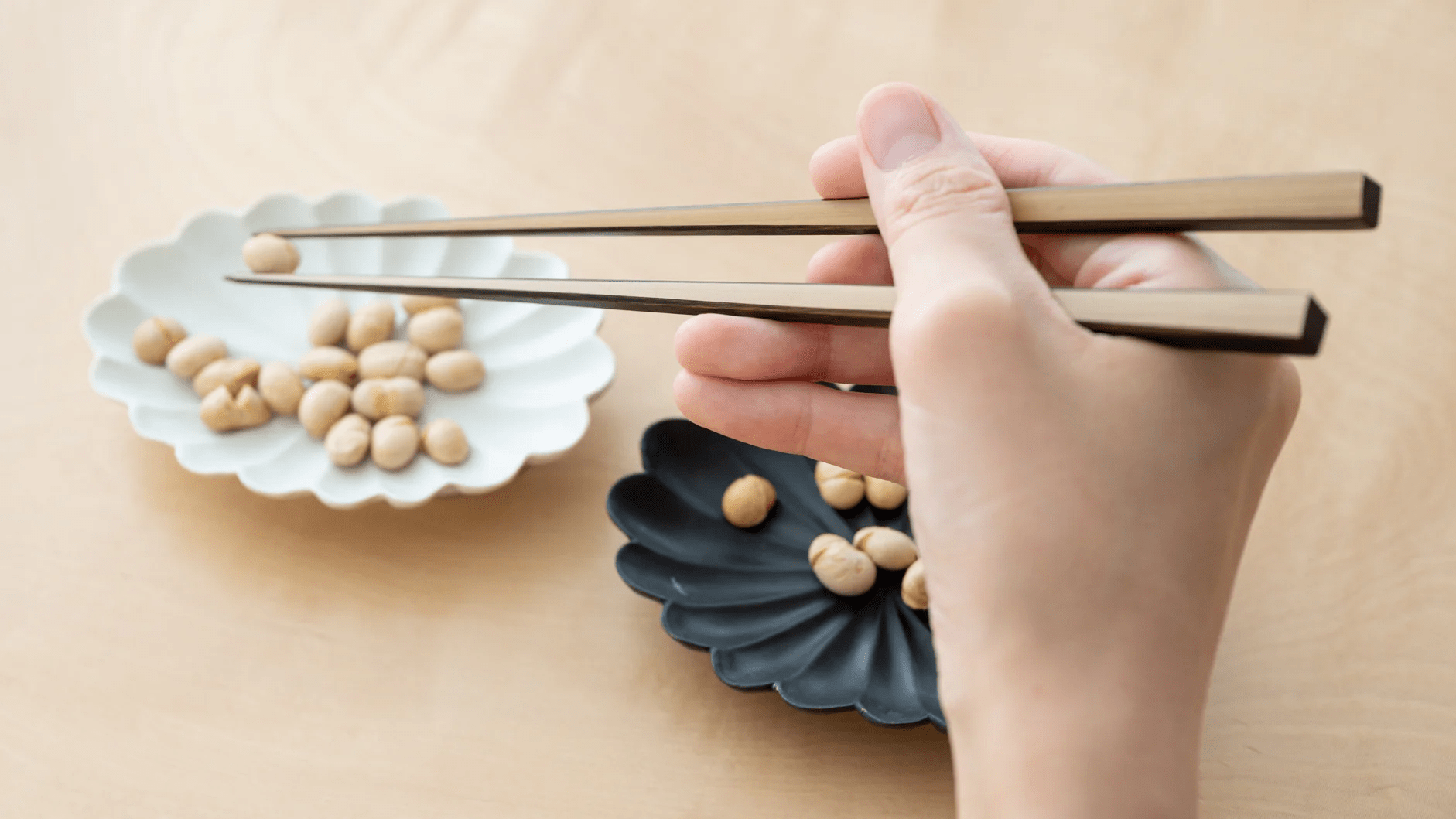
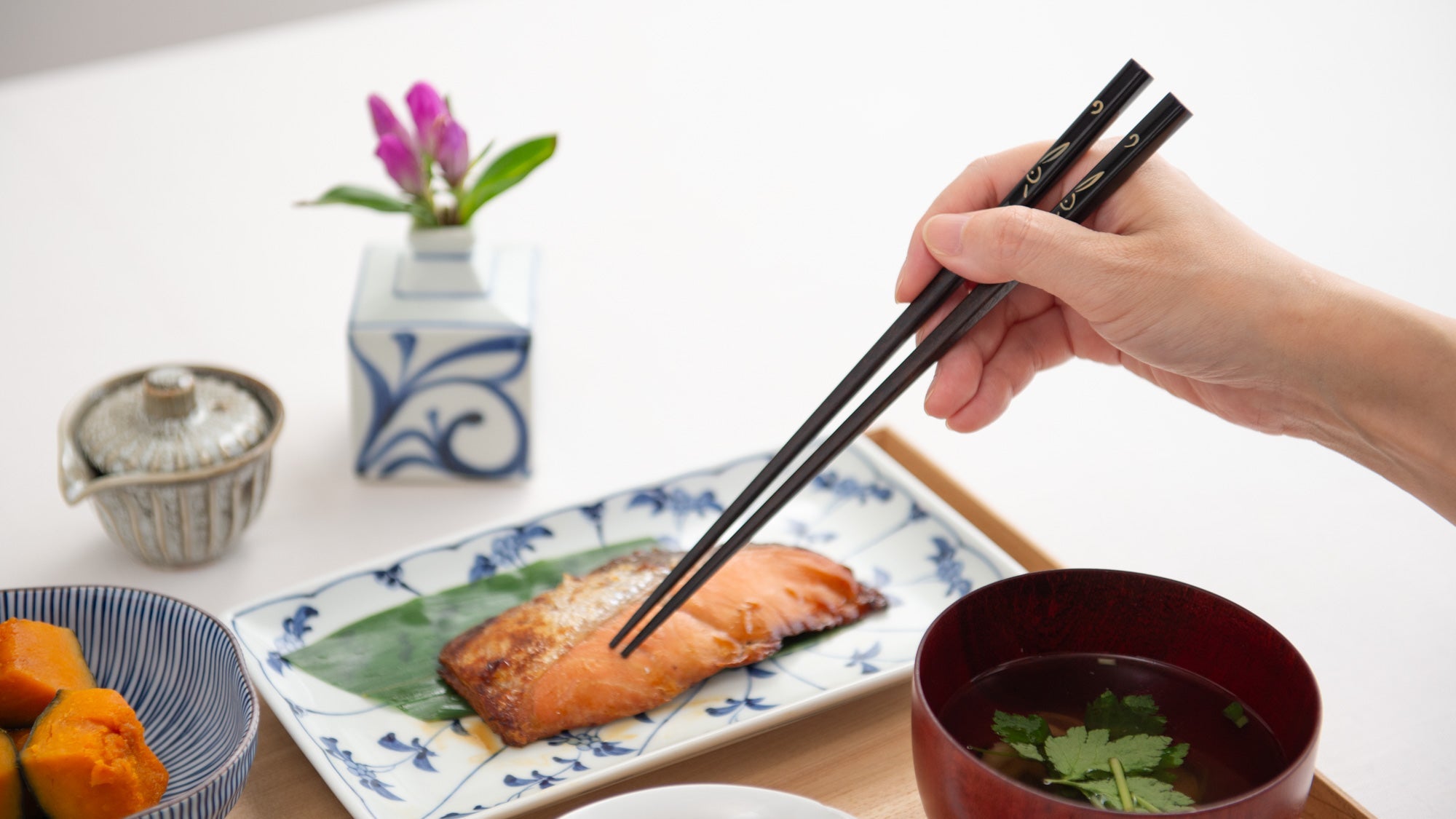

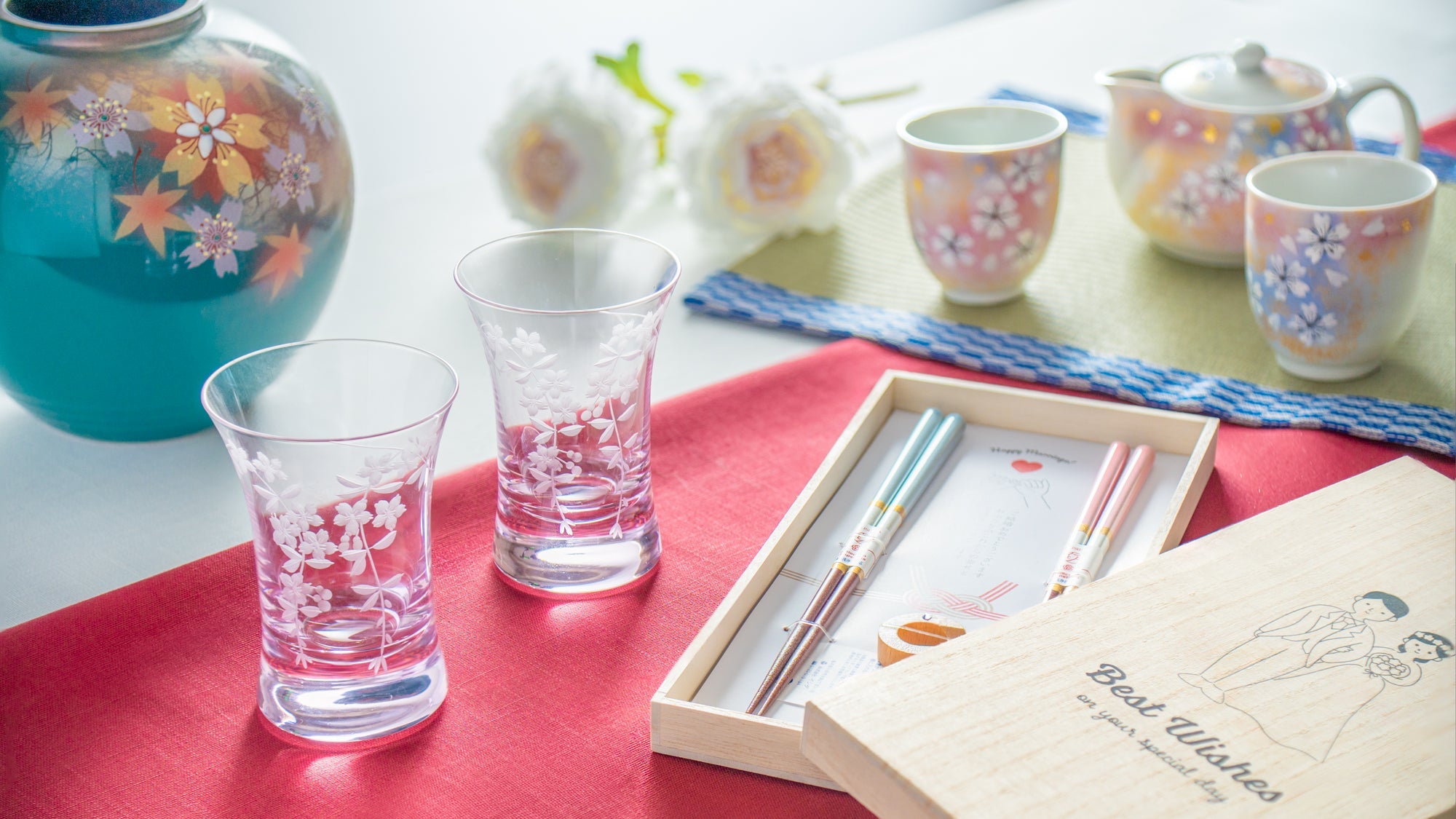
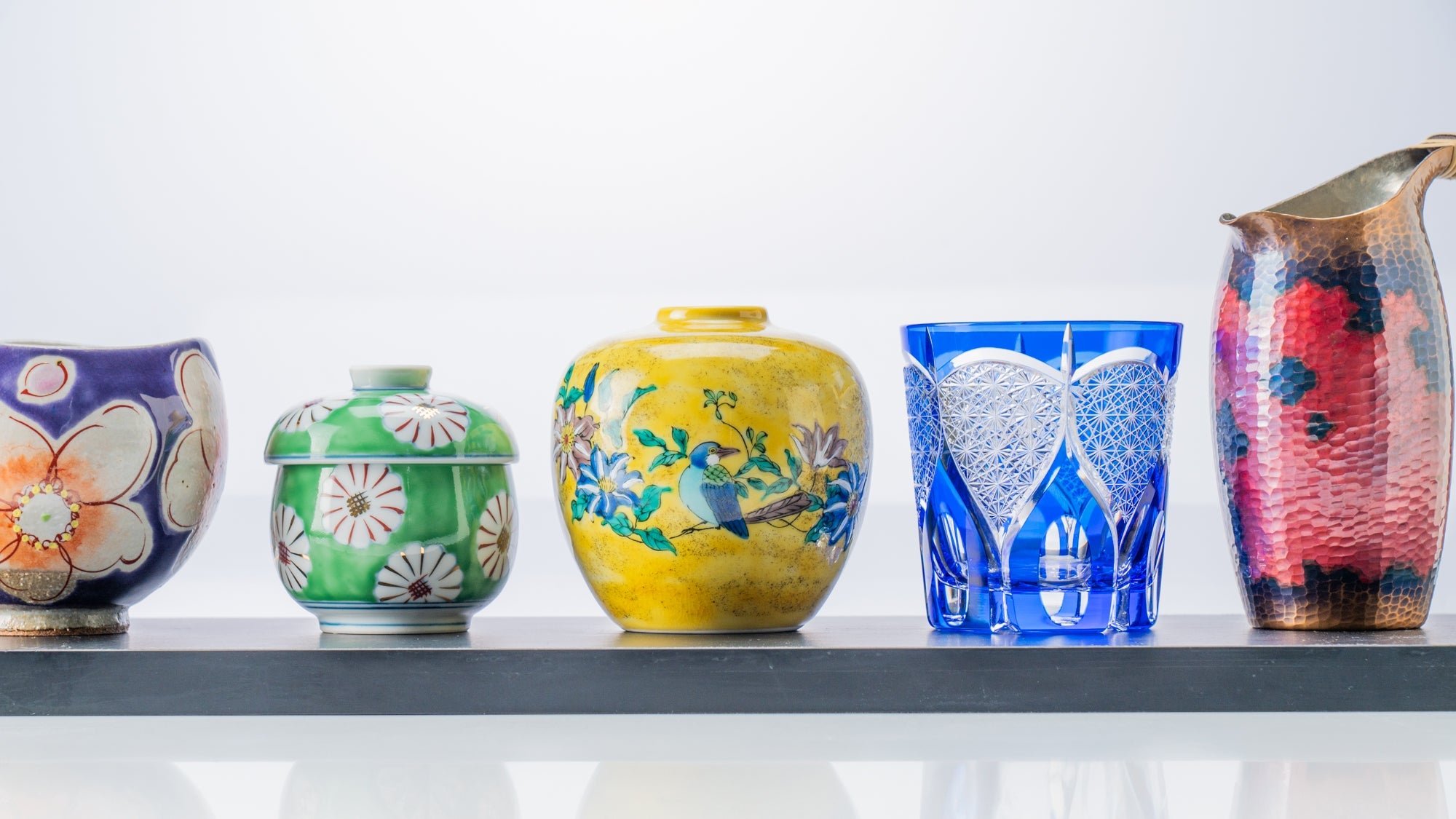
Leave a comment
This site is protected by hCaptcha and the hCaptcha Privacy Policy and Terms of Service apply.